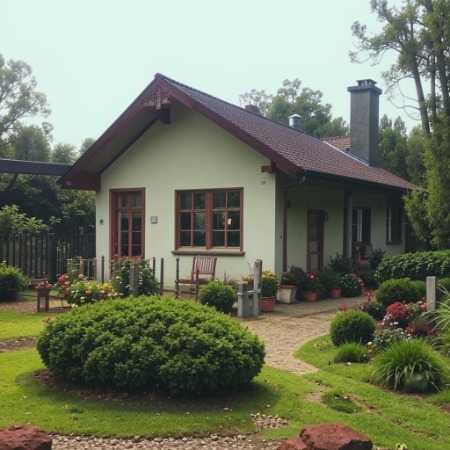Flat roofing is a popular solution for many buildings, both residential and commercial. Despite its seemingly simple design, flat roof repair requires deep knowledge, professional approach, and proper material selection. Improper repair can lead to recurring leaks, deformations, and significant financial costs. This article provides a detailed overview of flat roof repair features, causes of damage, repair methods, and modern materials that ensure durability and reliability of the roofing.
Features of Flat Roofs and Causes of Damage
Flat roofs differ from pitched roofs by their nearly horizontal surface with minimal slope for water drainage. This design facilitates the installation of engineering systems, ventilation equipment, and creation of usable terraces. However, the minimal slope and constant exposure to weather conditions impose increased stress on the roofing layers.
The main causes of flat roof damage are water stagnation, mechanical impacts, and material aging. Water pooling leads to the destruction of waterproofing layers and promotes mold and mildew growth. Mechanical damage can result from improper use, falling branches, snow loads, or careless maintenance.
Temperature expansion and contraction also negatively affect roofing materials, causing cracks and tears. Poor installation, use of inappropriate materials, or neglect of regular maintenance significantly reduce the roof’s service life.
Diagnosing the Condition of a Flat Roof Before Repair
Before starting repairs, a thorough inspection of the roofing surface is essential. Visual examination reveals obvious defects like cracks, bubbles, delamination, and leak points. Special attention is paid to seams and joints, as they are vulnerable areas.
More precise assessment uses instrumental methods such as thermal imaging, which detects areas with increased moisture and heat loss. Washing and drying tests help determine damage depth and nature.
Thorough diagnostics not only identify leak causes but also help select optimal repair technology and materials. Skipping this stage risks superficial repairs and recurring problems.
Types of Flat Roof Repair and Their Characteristics
Flat roof repairs can be classified by damage severity and scope into routine, major, and emergency repairs.
Routine repairs address minor defects like small cracks, minor leaks, and waterproofing damage. Usually, this involves surface cleaning, application of repair mastics, or patching with roofing materials. Such repairs extend roof life by several years with regular maintenance.
Major repairs are required when the roofing layers are significantly worn, necessitating replacement of waterproofing, insulation, and other components. This process is more labor-intensive and costly but ensures long-term reliability and prevents serious structural damage.
Emergency repairs are performed in case of sudden severe damage, such as after strong winds, hail, or mechanical impacts. Prompt leak sealing is critical to prevent moisture ingress and further destruction.
Modern Materials for Flat Roof Repair
Material choice depends on roof type, damage nature, and operating conditions. Traditionally, bituminous materials have been used for their waterproofing and elasticity.
Modern technologies offer polymer membranes like PVC, TPO, and EPDM. These materials feature high strength, UV resistance, and temperature tolerance. They provide long-lasting protection and reduce the need for frequent repairs.
For local repairs, mastics and sealants based on bitumen or polymers allow quick patching of minor defects. Major repairs involve multilayer roofing systems with insulation, vapor, and waterproofing layers for reliability and energy efficiency.
Flat Roof Repair Technology: Step-by-Step Guide
The first step is surface preparation: cleaning from debris, dust, old materials, and drying. Preparation quality affects adhesion and repair durability.
Next, base defects are repaired: crack filling, surface leveling, and waterproofing restoration. Major repairs involve removing old layers and installing a new roofing system.
Bituminous materials are heated and applied in multiple layers with overlapping seams. Polymer membranes are installed using hot air welding or adhesives, ensuring seam tightness and strength.
The final stage includes seam and joint treatment, installation of flashing and drainage systems to prevent water pooling and extend roof life.
Post-Repair Operation and Maintenance Features
After repair, it is important to follow flat roof operation rules to avoid premature wear and repeated damage. Regular inspections and cleaning of debris, snow, and leaves prevent drainage clogging and water pooling.
Avoid mechanical damage, do not store heavy objects, and protect the roof during construction works. Periodic renewal of protective coatings and sealants, especially at seams and joints, is recommended.
Preventive maintenance includes timely repair of minor defects, significantly reducing the risk of major repairs and saving budget in the long term.
Comparative Table of Popular Flat Roof Repair Materials
| Material | Strength | UV Resistance | Waterproofing | Installation Complexity | Service Life | Cost |
|---|---|---|---|---|---|---|
| Bituminous Materials | Medium | Medium | High | Medium | 5-10 years | Low |
| PVC Membranes | High | High | Very High | High | 20-30 years | High |
| TPO Membranes | High | Very High | Very High | High | 20-30 years | High |
| EPDM Membranes | High | High | Very High | Medium | 20-25 years | Medium |
| Repair Mastics | Low | Medium | High | Low | 1-3 years | Low |

